
Marcus Hanke
[PuristSPro Moderator]
11515

The big SuperLuminova luminance comparison test
Let's test the performance of various SuperLuminova variants
by Marcus Hanke
by Marcus Hanke
Especially on sports watches, luminance is a vital design element: even when we are not diving in the depths of eternal submarine darkness
Some six years ago, I wanted to compare the luminosity of the non-radioactive SuperLuminova with that of the traditional tritium-activated phosphorus and conducted a small test, with the Ulysse Nardin Marine Diver being the the SuperLuminova candidate, and the classic IWC GST Aquatimer with its infamous tritium-SL-combination dial representing the other category. The outcome of the test was quite interesting:
ulyssenardin.watchprosite.com
During the following years, it has become a design trend to use not only the “classic”, greenish SuperLuminova as luminous substance on hour markers and hands, but to tint that in different colours. This permits a larger freedom in combining colours on watches and therefore offers a wider spectre of watch designs. Coloured SL is produced rather easily, since the the original state of SL is that of a fine granulate or powder, that is bound by liquid substance to be applied on dials and hands. Any colour pigments can be added to the SL granulate in order to achieve the desired effect. This can go so far as to add black pigments that result in a black marker or hand that glows in the darkness. Nemoto, the inventor company of SuperLuminova, and its main license partner in Switzerland, Tritec, offer a wide array of colours. Currently, the use of tinted SL became popular to simulate the appearance of old and yellowed phosphor on vintage timepieces.
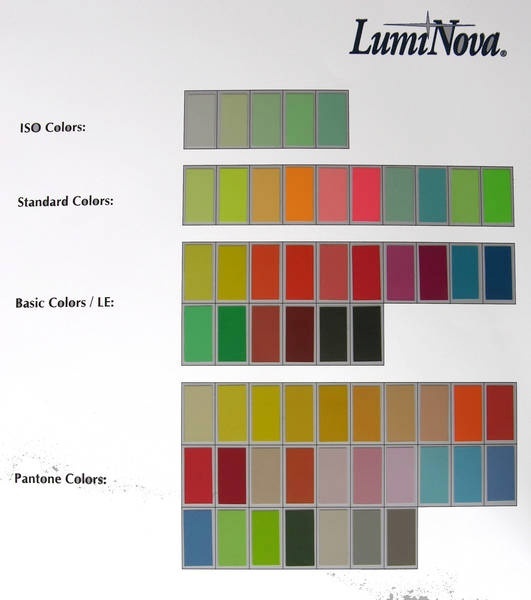
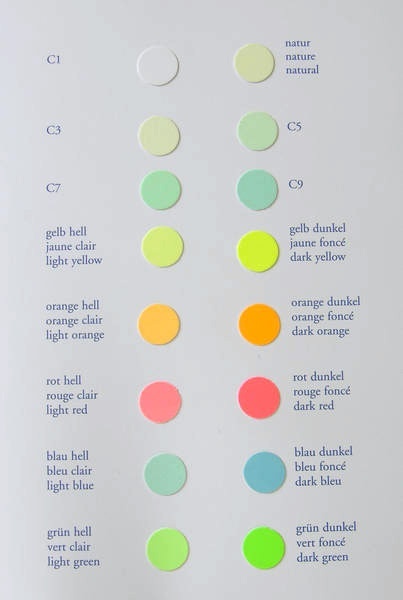
Luminova colour charts by Nemoto (left) and Tritec (right)
However, this freedom of design comes at a price: the colour pigments reduce the intensity and duration of the SL’s phosphorescence. In the case of black-tinted SuperLuminova this even leads to nearly complete ineffectiveness, which raises the question why someone would spend the money for non-luminescent luminous mass?
Another development is that of a bright white SuperLuminova. The well-known SL that is used since 1993 is of a light green colour, with its current formula wearing the technical designation C3. Despite its high efficiency, the greenish tint is not popular among watch designers, since it is not a perfect contrast with most black watches, or blue dials. Therefore, the development of a bright white pigment, dubbed C1, was a real progress, and currently a majority of sports watches is equipped with this material. However, already the data sheets suggest a reduced phosphorescence intensity of C1, compared with that of C3.
Another aspect worth to be pointed out is that the colour pigments added to the SL only marginally influences the actual glowing colour. Basically, all kinds of SL are glowing in pale green, regardless of their appearance in daylight. There is only a very decent colour tint when such pigments were added to achieve, say, a bright blue or red SuperLuminova marker.
My new test should now reflect these new design trends, by comparing a watch with classic greenish C3 SL with others having white C1 and brightly coloured SL. Of course it would be perfect to have three watches of the same brand and line, with only the luminous material being the difference. However, my choice is limited to those watches I have in my possession, so I have to combine different brands.
Obvious candidate for the C3 fraction, and unbeaten “master of glow” in my collection since more than ten years is still the Marine Diver by Ulysse Nardin. Up to now, I had no watch that could really compete with the intensity and duration of its luminescence.
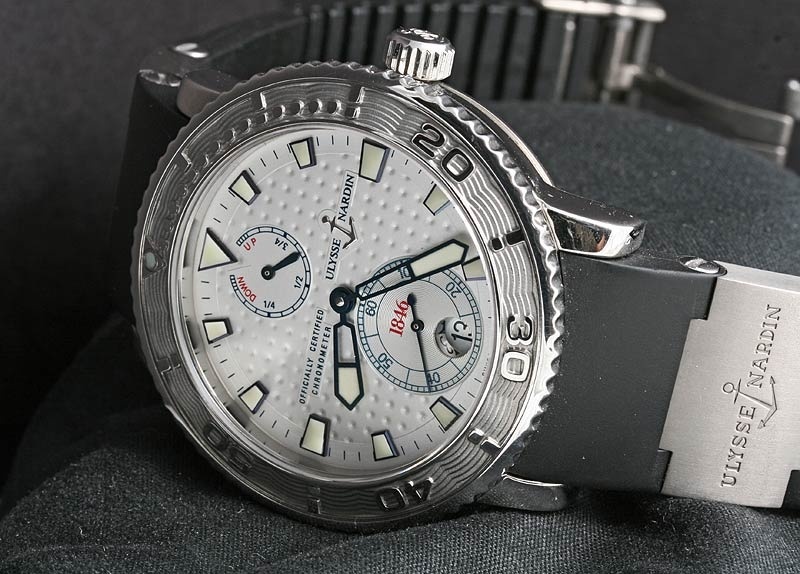
Ulysse Nardin Marine Diver
In this context it is necessary to point out that, despite the use of identical SuperLuminova materials, there are many other factors influencing its efficiency: the purity of the granulate, its sealing against humidity, the thickness of application, the type and colour of its base, and some others. Consequently, it is not only possible, but rather probable to find two different watches with the same SuperLuminova equipment to perform very different in the luminescence category.
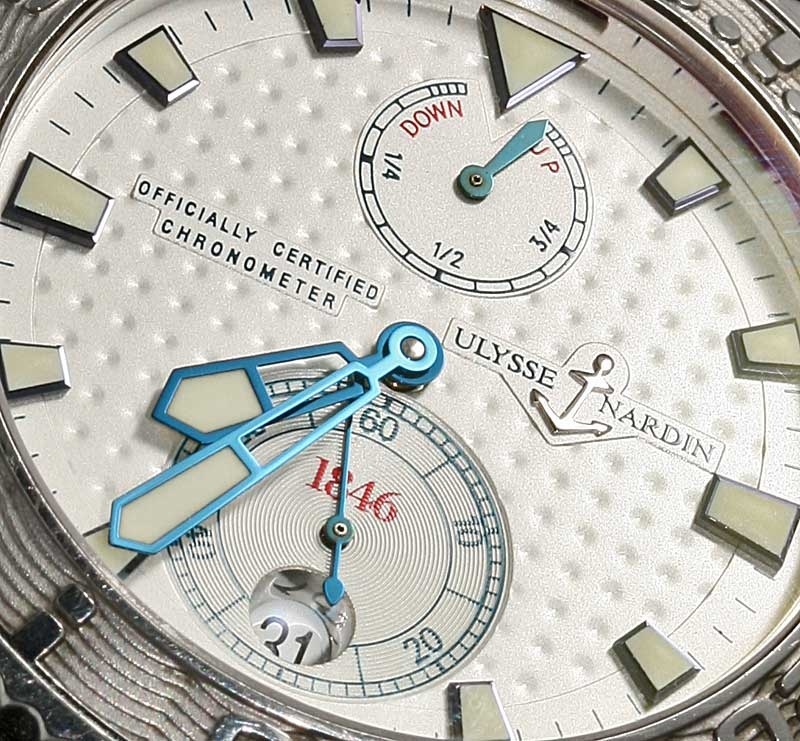
C3 SuperLuminova on the Marine Diver
That Ulysse Nardin lent me a very new and rubberised special model of the Marine Diver, the “Red Sea”, was a fortunate opportunity, since it has the same hand and hour marker design as my older watch, but sports an all-over bright red SL equipment, offering a perfect comparison candidate.
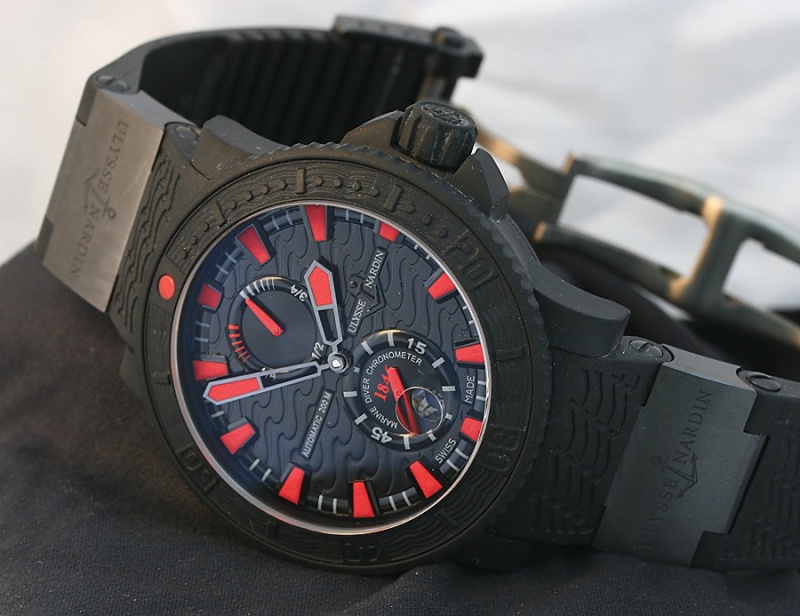
Ulysse Nardin Marine Diver "Red Sea" with red tinted SuperLuminova
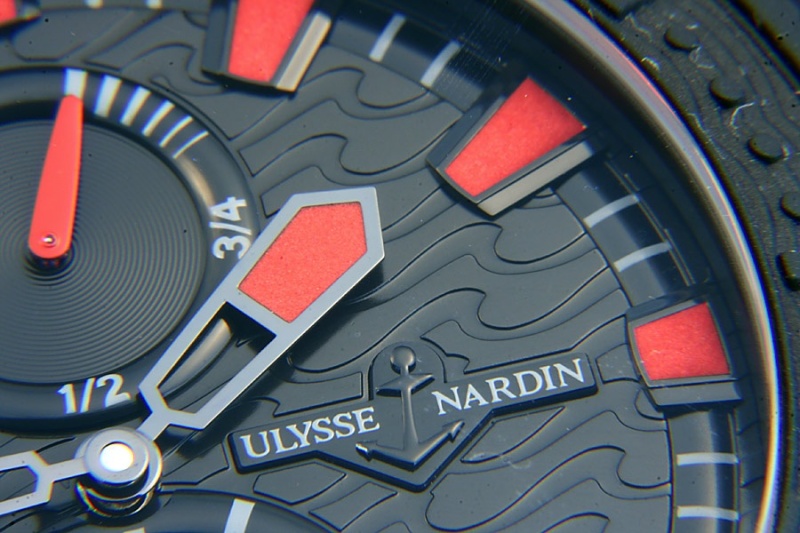
Finally, my nice Tissot PRC 100 chronograph with its bright white C1 SuperLuminova completes the trio.
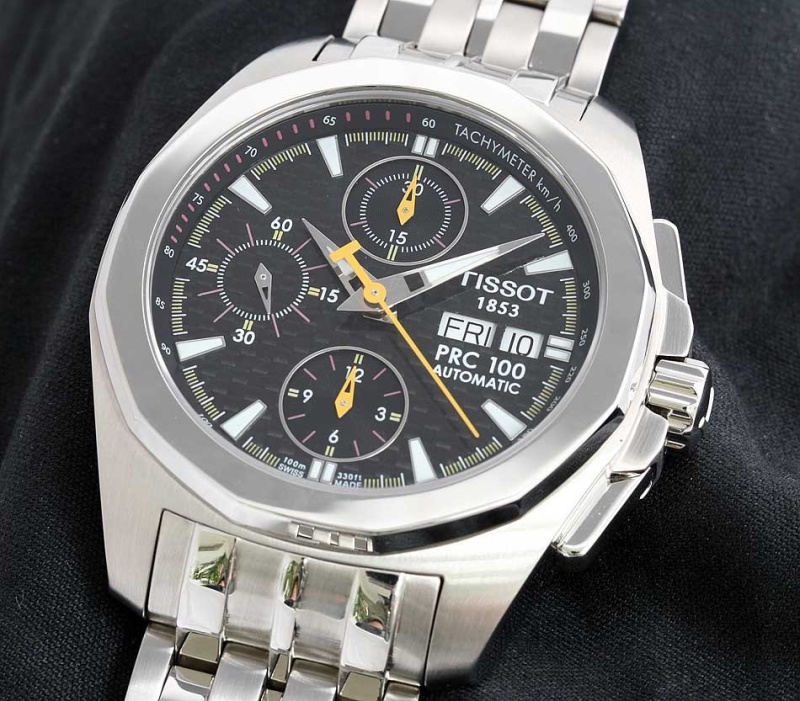
Tissot PRC 100 with white SuperLuminova C1
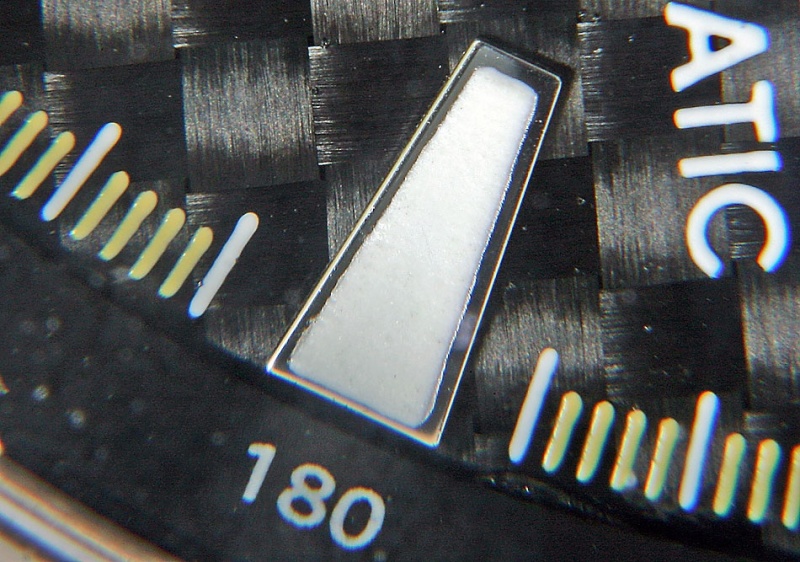
Since I did not yet have night shots of two other “retro-design” sports watches, I added these as well: the well-known Legend Diver by Longines, and the large Breitling SuperOcean Heritage, both equipped with C3 on hands and markers. These two eventually allowed another interesting conclusion.
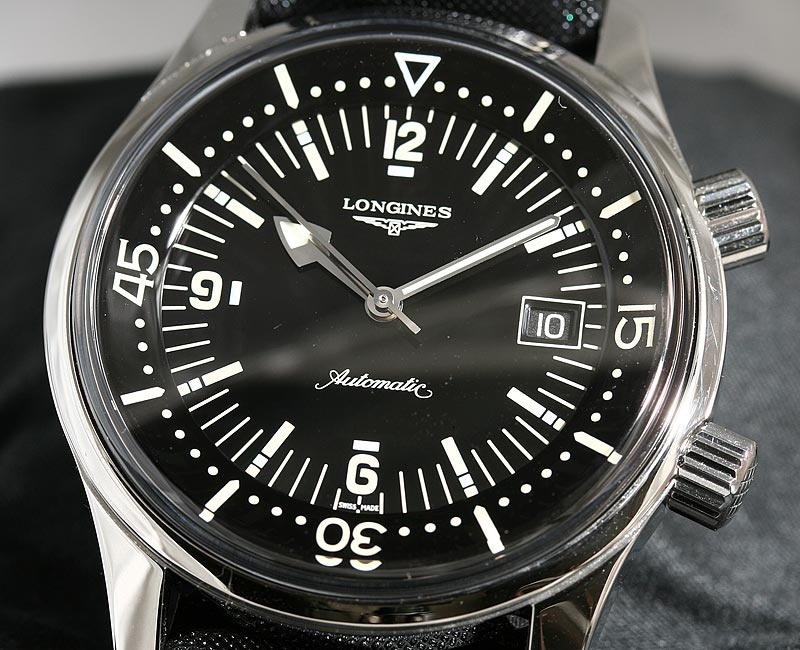
Longines Legend Diver, SuperLuminova C3
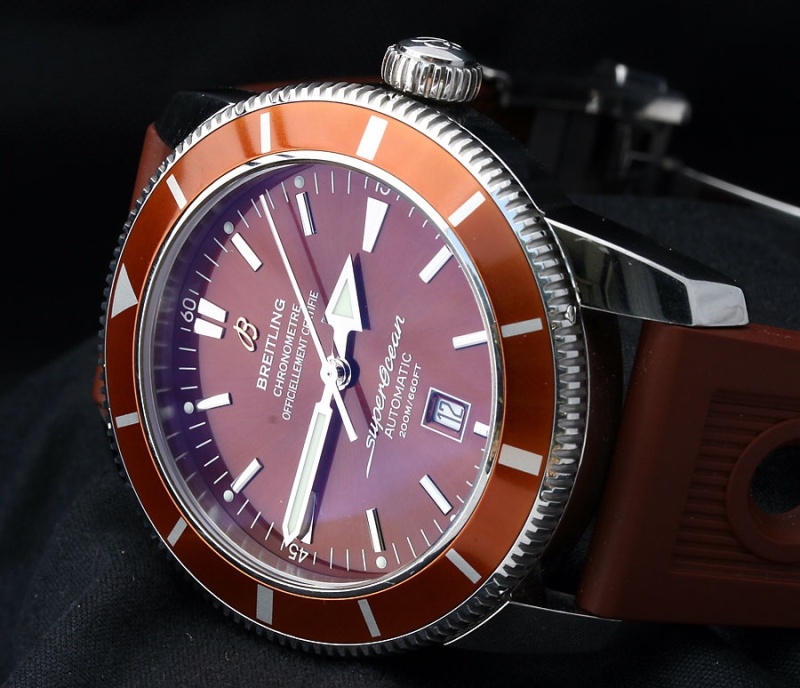
Breitling SuperOcean Heritage with SuperLuminova C3
Testing Procedure:
For a good “charge” of the luminous elements, I placed the watches in very bright sunlight, since the strontium aluminate in SuperLuminova is said to be best charged by the visible spectrum of daylight. I considered two hours to be enough. Then I brought the watches into a window-less room in my house’s basement, where I had already prepared my camera on a tripod.
I had planned to keep the exposure values preset on the camera the same, throughout the whole series. This should cover about six hours, with pictures being made shortly after the daylight exposure, an hour afterwards, a further two hours later, and finally after six hours. The automatic white-balance on the camera was changed to a daylight preset, since otherwise the colour of the glow would change in every picture.
Since my 60mm macro lens on a camera with APS-C sensor corresponds to roughly 100mm on a full format sensor camera, the working distance between the watches and the camera was rather large, about forty centimeters. Consequently, the intensity of light recorded by the sensor was much lower than it had been in my experiment conducted six years ago, due to the much larger distance. Thus it does not make sense to compare the new test pictures with those in my earlier article.
To my shame I have to admit not having read my own article before conducting my new test. Otherwise I would have been warned about the massive drop of glow intensity already within the first hour, and used a camera setting that maximises the light recording. Instead, I repeated the same mistake of six years ago, and realized that my initial camera setting, that brought the most satisfactory pictures of the “fully charged” watches, resulted in near-complete darkness on the pics only an hour later.
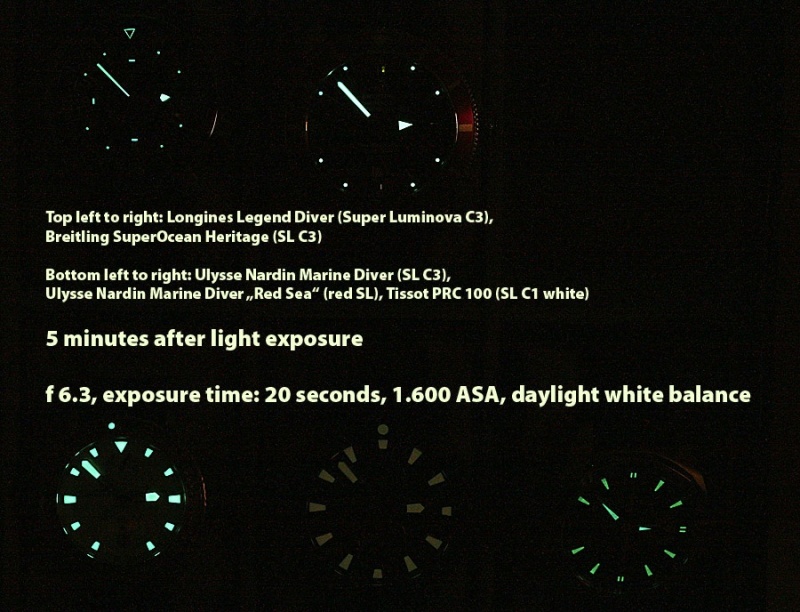
The first shot looked nice ...
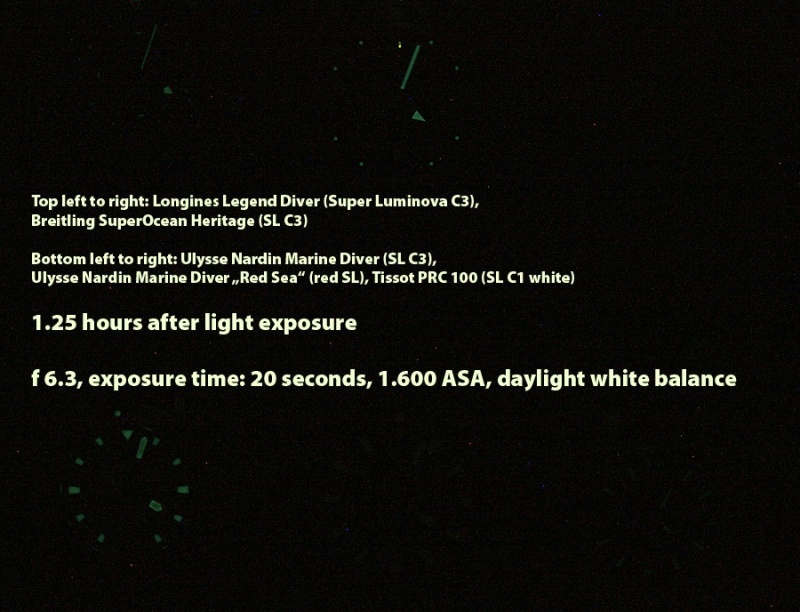
... only to lead to unacceptable results only an hour later.
As a matter of fact, SuperLuminova’s afterglow luminance is reduced to about 6% of its original value within 60 minutes.
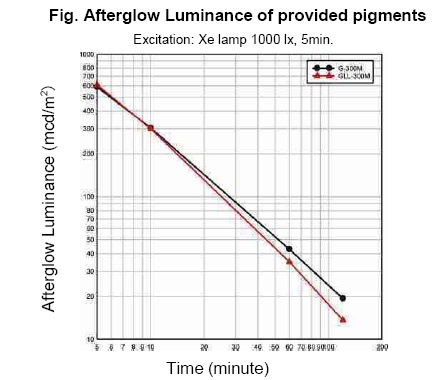
(c) Nemoto
Therefore, I decided to recharge the watches with the light of two halogen working lights for about twenty minutes and to repeat the initial shot, showing the watches at full charge, but with the same camera settings used for the shots at 1, 3 and 6 hours. This explains the display of the wrong time on the first picture.
Test results:
I think the pictures to be rather self-explanatory. Please keep in mind that the depiction of the glowing watches strongly depends on your individual monitor settings, especially the gamma value. While some might not see any luminescence on the later pictures, others might see the markers and hands much more clearly. It is the relative luminescence intensity, compared within the watches, that counts. The text in the pictures will also help, since its colour is picked from the “Red Sea’s” glow in the first picture, and kept the same throughout the whole series. A dark background on the monitor would be perfect, but our forum software only offers a bright white which kind of outshines the faint glow of the watches in the pictures.
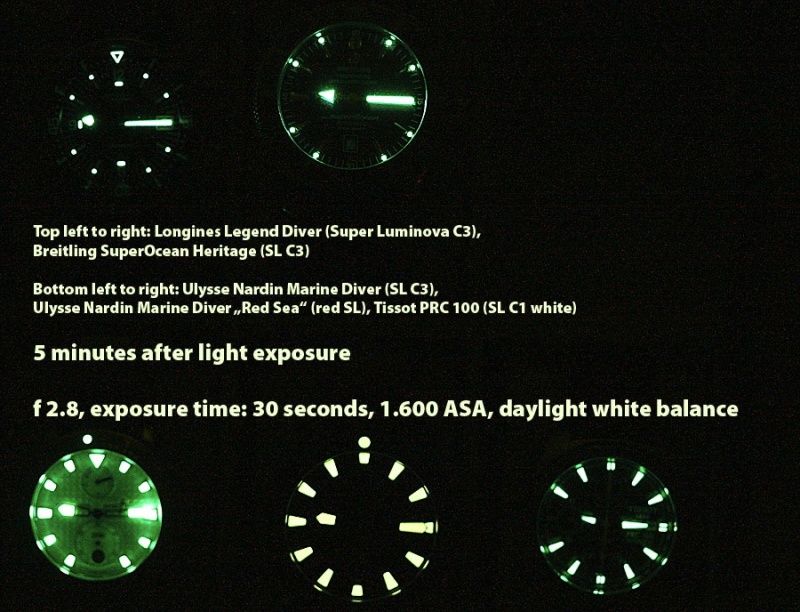
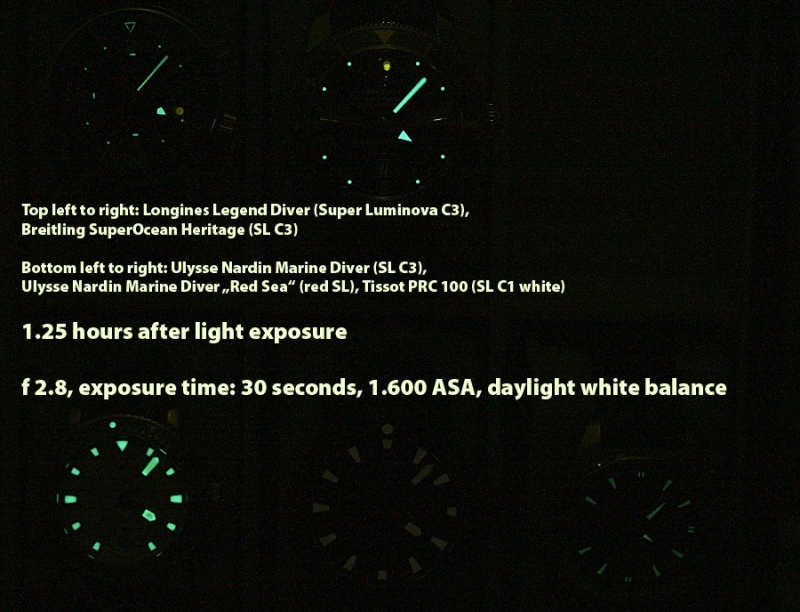
The most apparent test result is that neither the coloured SuperLuminova, nor the bright white C1 SL are matching the efficiency of the older C3 SL on the standard Marine Diver. Especially the colour tinted SL of the “Red Sea”, while equally lavishly used on hands and markers, is just barely visible after only 1.25 hours of darkness, the later pictures (3.25 and 6 hours) only show darkness at its position (bright monitor setting will show a very faint impression of the watch being there, though). The white C1 SuperLuminova of the Tissot is only marginally better.
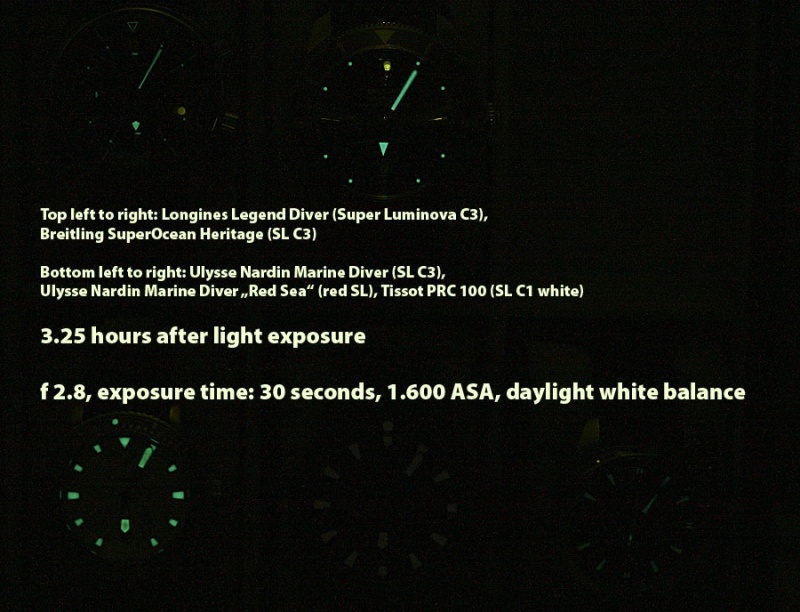
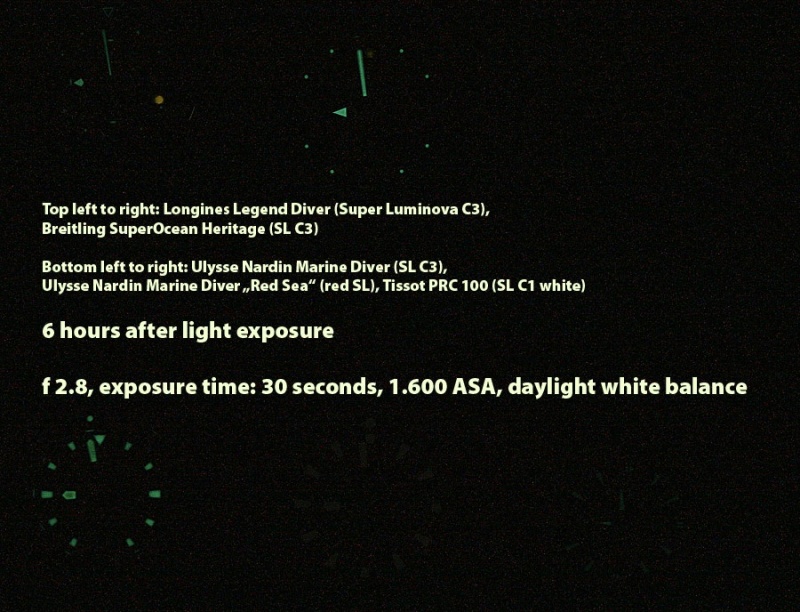
The conclusion is that if you search a watch with optimum night visibility, make sure to choose a watch with the greenish C3 SuperLuminova, instead of the more fashionable white or colour-tinted substances.
What about tritium?
However, I have to add a certain reservation to this statement: While SuperLuminova is the most frequently used luminescent agent on watches, it is not the only one. A highly interesting alternative is the “Permanent Light Technology (PLT)”, developed by the Swiss manufacturer MB microtec AG. The system consists of tiny crystal glass tubes, coated with phosphorescent zinc sulfide on the inner side, and filled with pure tritium in gaseous state. Unlike the older, now forbidden phosphorus-tritium granulate used for decades on watch dials and hands, Microtec’s system assures that no radioactivity is leaving the glass tubes, and also the glowing efficiency of the luminous substance is much higher and more stable, mostly due to the high pressure of the gas in the tubes. These attributes made the PLT a perfect supplier for the watches of the US military, with the watches being produced under the brand name Traser. Tritium gas tubes are available in different colours, too, but like the coloured Luminova material, these are nowhere as bright as the pure, greenish tubes.
However, PLT is suffering from two disadvantages: the first is a limitation for the watch design, since the small tritium tubes (with only 0.5mm in diameter, in lengths from 1.3 to 6.6mm) that can be used in wristwatches are produced in cylindrical shape only and therefore watch designers have to tweak their drafts considerably, to accommodate the tubes in their numerical markers or classically shaped hands, for example.
The second limitation lies in the tritium’s nature as radioactive substance. By constantly emitting energy, tritium transforms into helium. After 12.3. years, 50% of the tritium has made this transition and ceased to be an activator for the luminous substance. After another 12.3. years, a further 25% of the original tritium amount is inactive. Consequently, the luminescence intensity of tritium tubes is reduced by roughly 10% each year. Since the tubes are highly standardized, most watch manufacturers using them guarantee a steady supply of fresh tubes that can be exchanged for the old ones.
Most Traser watches are equipped with quartz movements, but there is a brand offering interesting mechanical watches with tritium tubes, Ball. Unfortunately, Ball is distributed neither in Germany nor in Austria; I would have liked to get my hands on one for a test, but this will have to wait.
According to MB microtec, the tritium tubes are glowing considerably brighter than SuperLuminova already after a minute of darkness, with no measurable intensity reduction, aside the natural deterioration due to the radioactive material’s half time.
And the other two watches?
Finally, a few words should be dedicated to the last two watches of my small test: the Longines and the Breitling. Both are equipped with the same C3 SuperLuminova, and yet there is a distinct difference in the intensity of their glow already after an hour of darkness. the main reason for this presumably lies in the care of the C3’s application: The Breitling has small luminous dots near the hourmarkers, all of them being domed rather high placed on bases made from white lacquer. The latter perfectly enhances the glow.
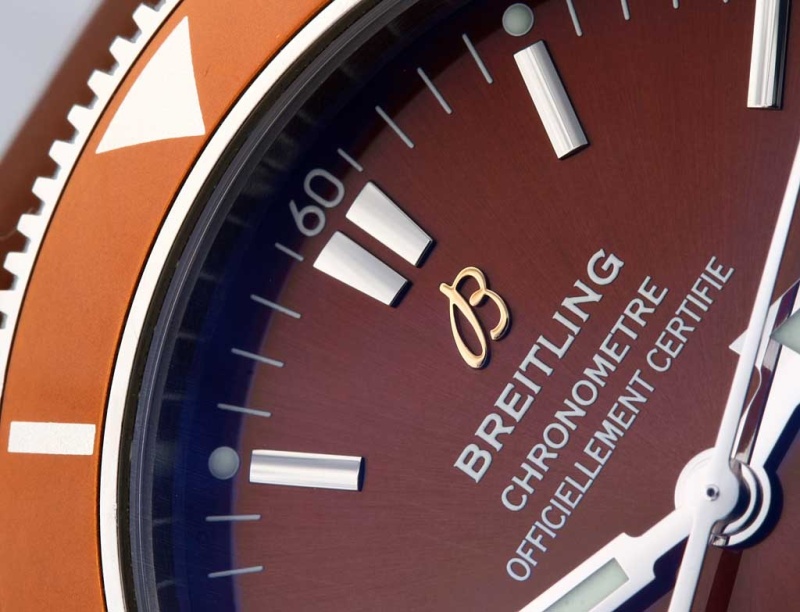
The Legend Diver, on the other hand, has thinner, less evenly shaped strips of SL applied to the dial. While they also have a white base, this seems to be less smooth and shiny than that of the Breitling’s markers.
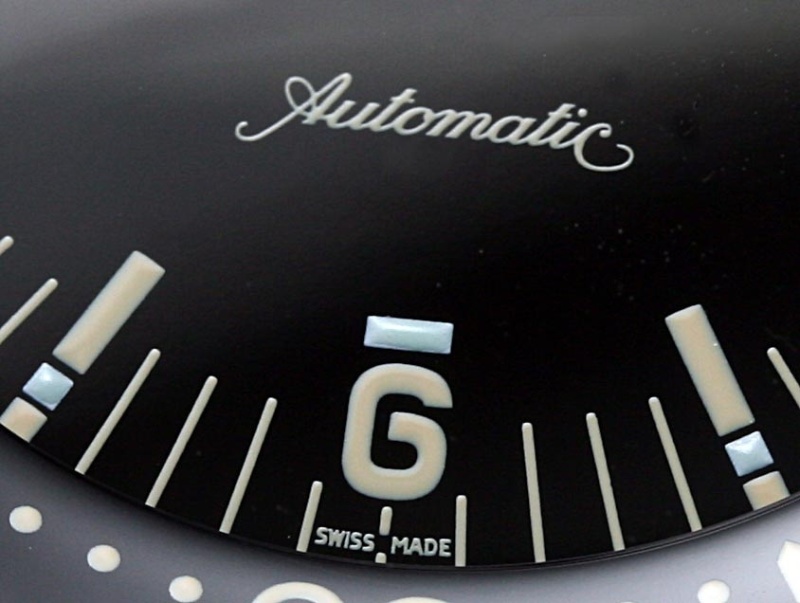
This makes the difference between the two watches. Apparently, also the hands are differently treated with SL, since the Superocean’s hands are a lot brighter as well.
And in another six years? Who knows which enlightenment technology will come next? LEDs powered by a micro-generator charged by the winding rotor? We’ll see, in my next test - 2018.
Finally, let me quote my own article from 2006: “If you have succeeded in reading all the way down until here, you will agree with me how fascinating it is that someone can spend so many words on such a minuscule detail. Oh watch enthusiasts - aren't they crazy?”
Copyright June 2012 - Marcus Hanke & PuristSPro.com - all rights reserved
PuristSPro Homepage | ThePuristS Homepage
This message has been edited by Marcus Hanke on 2012-06-14 15:08:44 This message has been edited by AndrewD on 2012-06-21 19:26:34

The big SuperLuminova luminance comparison test
Let's test the performance of various SuperLuminova variants by Marcus Hanke Especially on sports watches, luminance is a vital design element: even when we are not diving in the depths of eternal submarine darkness Some six years ago, I wanted to compare...

Very interesting ...
Marcus, One word: Bravo! It's great to read a crystal clear analysis of this matter. Congratulations, Nilo

Thanks a lot ....
... but please don't forget that my procedure was by no means scientific. It only confirms what was already stated in the manufacturers' datasheets. Regards, Marcus

Some more comparisons, including PLT
Hi Marcus, While not an engineer, and incapable of running my Sony camera in any mode other than "Auto", I thought I would take the resources I have at hand and do a comparison to complement yours. I do have an assortment of luminous material from my amat...
But my eye sees otherwise...
Hi Mr. Hanke and cazalea, I appreciate very much the information about super lumina and the effort it took to complete these experiments, but I'm not sure how to relate to your results. I note that in this second report by azalea there is a Gerber Model 4...

My Gerber's P10 dial is not the same as your 42's dial
it has the black colored luminous material, which is tolerable for a very short time and at very short range (and provides full camouflage when swimming with salmon) I did some lume shots of the Gerber last summer. Here's the best one but it took a lot of...

Never underestimate the abilities of your built-in hard- and software ...
the human body is a miracle, and also the eyesight is a wonderfully complex and flexible system with unbeaten capability. The optical sensor consists of two different types, rods and cones. The cones are in use whenever there is enough ambient light. Cone...

Great addition with interesting test subjects ...
Of course it would be great to know the exact camera settings, but the EXIF data are not accessible. In automatic mode, most cameras manipulate their exposure programs in a way that the outcome is sometimes difficult to be compared with a slightly differe...
red light results
the red variation's rather underwhelming results just about matches my experience with similar hands on the blancpain speed command. it's supposed to have good lume, but it's just disappointing on that count, and your exercise gives me a little comfort: t...

We have to accept that coloured SL is there to look good at daylight ....
... and fulfils that job very well, otherwise we would not be attracted to these watches so much. Regards, Marcus

I made it all the way to the end!
Wow, Marcus. Very well done and definitely one for the books. Totally appreciate that UN of yours. And to think I was looking forward to the glow of the red one. So as I understand it, even if you use the same material, the final result will depend on how...

Yes, not only the type of granulate, but ...
... also the application method is important for the glow result. Since the luminescent substance is a granulate, a liquid binder is necessary to make a paintable colour from it. SL does not like humidity and quickly loses its abilities in contact with hu...

This post is so cool! You cut the grass under my feet, I wish to realise it since many
years! Great post! A panerai in a future test?

Always wanted a Panerai inlcuded ...
.. but lacking an own one, and having no people around willing to give me one for test, I have to pass. Maybe we should start some kind of regular test scheme with watches given by the industry for that purpose: The annual Glowworm Award - with different ...
Nice post...
Hey Marcus, A great post - many thanks for all the effort. Years ago on another site I remember a discussion about the importance of the thickness of the luminous material and I have an idea they mentioned other factors such as density, but I really don't...
Thickness also adds weight...
Good point about thickness. I think I remember Gerber pointing out that thinner is not as bright, but also that for the second hand on the Model 42 he had to use a thinner application because of the weight of the luminescent material.

For second hands, and their frequent stopping and acceleartion ....
(eight times per second) the increased mass of the paint might indeed be an issue. However, I rather think it is the slim second hand being a poor base for a thick layer of the granulate. Regards, Marcus

Interesting report. How can you acertain the properties...
Of the lume just by sight and with no tests?

You mean the chemical and physical properties?
In this respect, I fully depend on the manufacturer's datasheets. However, I did not make my comparison in order to supply an academ8ically valid scientific test; just a easy setup that only confirms what the datasheets already stated. Regards, Marcus

A very informative post!
A very informative post! I find the luminous intensity of watches to vary greatly as well! And this has always been a question in my mind. Sometimes I wonder how thick the layer of the luminous paint is used. Sometimes I wonder about the quality of the lu...

The colour is certainly the most decisive factor ...
... but as the example of the Longines and the Breitling shows, the application and dial preparation, too, makes a large difference. The UN Marine Diver excels in this discipline beacuse of its very thick SL layer on the markers. the variation in brightne...
Excellent review- will really help with restoration
Of vintage timepieces where adding tritium back on the dial and hands is not an option. I am in the middle of restoring a vintage Oris with tritium all over the dial and hands, and was just wondering about adding superluminova to match the original color....

In a restoration job ...
... it is always difficult to decide whether the original state (factory-fresh) or the "used" look should be recreated. For a condition "as new", the C3 could indeed be the best choice, but if you like the faded appearance of old tritium-activated phospho...
duly noted
Excellent point, I was originally going to use C3, but the more I look at the faded color of the tritium on the hands, it is more pale green than I remembered. It's been a while since I worked on it, it needs a new balance staff I must yet turn. I will tr...
"The thicker the brighter!"
Quote from the Super-Luminova datasheet. "The achievable luminosity is directly dependent on the thickness of the applied pigment layer. The thicker the brighter!" http://navigater.na.funpic.de/PDF/Technical%20Data%20Sheet.pdf nick

This is the reason ...
... why the Marine Diver is so good in this respect. But also the preparation of the base (glossy white or silver base, vs. flat or even dark-coloured base), and the chemical stability of the particle binder should not be neglected. Regards, Marcus

Damn computer! I almost ended my answer that all was erased! :(((
To make it short, I loved your article a lot. Very interesting to see the difference between the different SLs you can find on the market, and in our watches. The most efficient is the C3, which was chosen by JLC, for example, for their NS Alarm, and for ...

Thanks! Don't forget that the glow is not emtited by the tritium or radium ...
... but by a phosphorescent substance. this can be phosphor, but also some other substances were used frequently during the history of luminescent dials. the radioactive agent (tritium or radium) is there only for the energy-supply. These elements have th...



HQ post.
Very interesting, I've enjoyed it. Thanks for taking the time to do and post it. Cheers, Vte :)


Thanks Marcus, I did get to the end of the article
and I did find your report most interesting. Nice work and look forward to making it to the next one! Best regards, Tim

Thank you for a very informative post :)
I have thought about this subject many times and your post as well as others has helped to answer most of my own thoughts. Those photos showing the old Radium and their effects were great. Regards Tony

Thank you all for your kind compliments! ...
I am glad you liked the article! Regards, Marcus




